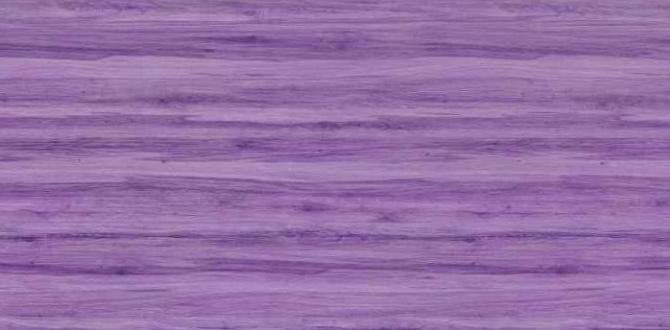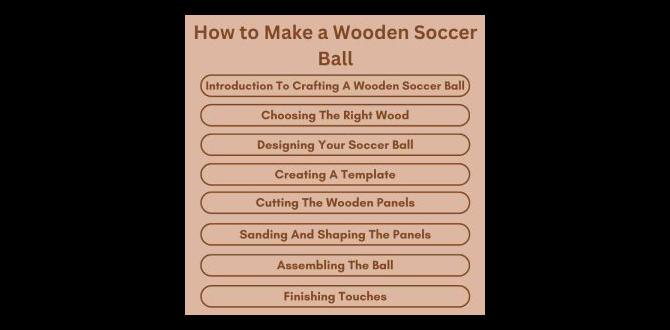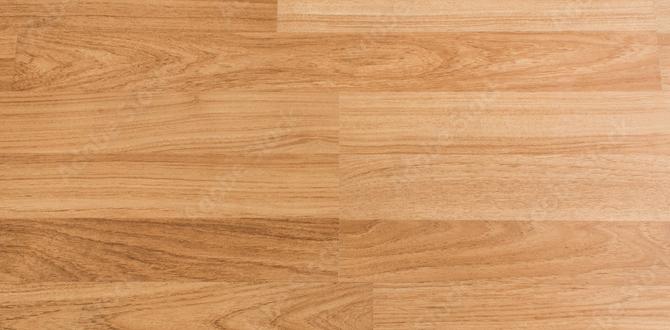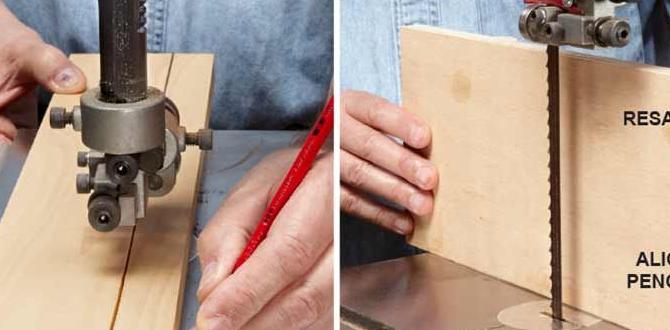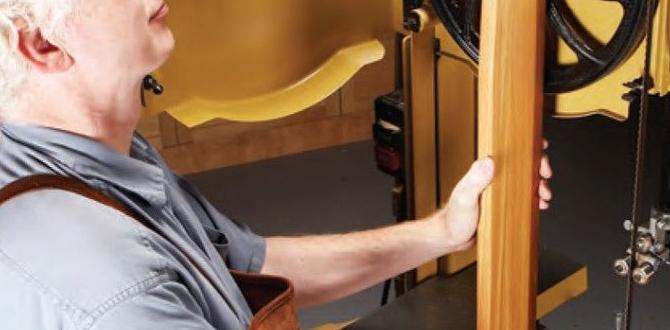Imagine walking into a cozy room with beautiful wood flooring. It feels warm and inviting, doesn’t it? But if you live in a humid climate, choosing wood flooring can be tricky.
Humidity can make wooden floors swell and warp. That’s why it’s important to find the right type of wood for your home. Did you know that some woods handle moisture better than others? For example, bamboo is a surprising choice. It’s strong and can resist humidity well.
In this article, we will explore how to pick the best wood flooring. We will share tips to keep your floors looking great, even in damp conditions. So, if you dream of wood floors that last, read on!
Table of Contents
Wood Flooring In Humid Climates: Best Practices And Tips
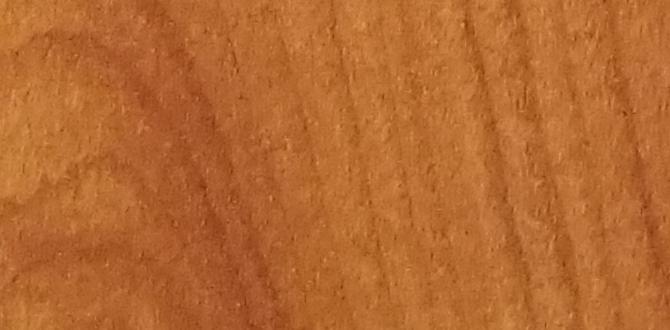
Wood Flooring in Humid Climates
Wood flooring can be tricky in humid areas. High humidity can cause wood to expand, leading to gaps or warping. Choosing the right type of wood is crucial. Some woods handle moisture better than others. Did you know that engineered wood can be a great option? It’s designed to resist future problems. Consider using dehumidifiers or proper ventilation to protect your flooring. With the right care, your wood floor can look beautiful for years. Isn’t it worth it to ensure your investment lasts?Understanding Humidity and Its Effects on Wood Flooring
Explanation of humidity levels and how they affect wood properties.. Common issues with wood flooring in high humidity environments (expansion, warping, etc.)..Humidity can be tricky for wood flooring. Humidity is the amount of moisture in the air. In places with high humidity, wood absorbs moisture and changes shape. This can cause problems, like:
- Expansion: Wood can swell, making it fit poorly.
- Warping: Wood may bend or twist unevenly.
- Cracking: Changes in size may lead to splits.
Understanding these effects helps keep your flooring beautiful. Regular care can protect wood from the challenges of humid climates.
How does humidity affect wood flooring?
High humidity can lead to serious issues. Wood expands and warps, which may ruin its look and feel. Proper installation and maintenance can help.
Choosing the Right Wood Species for Humid Climates
List of wood species that are more resistant to humidity (e.g., teak, mahogany).. Factors to consider when selecting wood for moistureprone areas..When picking wood for humid places, some types are better than others. Teak and mahogany stand out for their toughness against moisture. Here are important points to keep in mind:
- Wood’s natural oils help it resist water.
- Hardwoods tend to last longer in damp areas.
- Wood treatment can improve moisture resistance.
Always choose wisely! The right wood can make your floors beautiful and strong.
What types of wood are best for humid climates?
Wood like teak, mahogany, and cypress are perfect choices. They are known for being strong and moisture-resistant, making them great anywhere that is humid.
Best Installation Practices for Wood Flooring in Humid Areas
Recommended acclimatization processes for wood before installation.. Installation techniques that minimize moisture issues (e.g., using vapor barriers)..Installing wood flooring in humid areas can feel like hosting a party for a picky guest. First, let the wood acclimatize. This means leaving it in the room for 48-72 hours before installation. Think of it as giving the wood a mini vacation! Next, use a vapor barrier under the flooring. This will help keep moisture at bay like an umbrella on a rainy day. Remember, happy wood means happy floors!
| Step | Tip |
|---|---|
| Acclimatization | Leave wood for 48-72 hours in the room. |
| Vapor Barrier | Use a barrier to block moisture. |
Maintenance Tips for Wood Flooring in Humid Climates
Regular cleaning and care routines to prevent moisture damage.. Recommendations for humidity control methods (dehumidifiers, ventilation)..To keep your wood flooring safe in humid places, regular cleaning is key. Sweep or vacuum often to get rid of dirt. Wipe up spills quickly to stop moisture damage. Use a damp mop for deeper cleaning, but don’t soak the wood. Humidity control helps, too. Here are some tips:
- Use a dehumidifier to lower moisture levels.
- Open windows for fresh air and good ventilation.
- Keep indoor plants to help balance humidity.
Taking these steps will help your wood flooring last longer and look great!
How can I prevent moisture damage to wood flooring?
Regular cleaning and effective humidity control are essential to preventing moisture damage.
Dealing with Existing Wood Flooring Problems
Common problems caused by humidity and solutions (sanding, refinishing).. When to seek professional help for repairs and maintenance..Humidity can cause big problems for wood flooring. Some common issues include warping, cracking, and gaps. Luckily, there are ways to fix them.
- Sanding helps make the surface smooth again.
- Refinishing renews the finish and protects the wood.
What can I do if my wood flooring is damaged by humidity?
You can try sanding or refinishing your floor to fix damage. If the damage is too severe, it’s wise to seek a professional.
Cost Considerations for Wood Flooring in Humid Climates
Budgeting for highquality moistureresistant wood.. Longterm savings from proper installation and maintenance practices..Wood flooring can be a big investment, especially in humid areas. Choosing high-quality moisture-resistant wood will help you manage costs over time. Proper installation and maintenance can save you money in the long run. Here are some budgeting tips:
- Save for top-notch materials.
- Hire skilled workers for installation.
- Regularly clean and care for your floors.
Good choices will keep your floors looking nice and lasting longer.
What are the long-term benefits of proper maintenance?
Regular upkeep helps prevent damage and costly repairs. Saving money now means spending less later.
Conclusion
In humid climates, wood flooring can be challenging. Excess moisture can cause warping and damage. Choose durable types like bamboo or engineered hardwood. You should also consider humidity control options, like using dehumidifiers. To keep your floors looking great, maintain proper ventilation and care. For more tips on caring for wood floors, check out reliable home improvement resources.FAQs
Sure! Here Are Five Questions Related To Wood Flooring In Humid Climates:In humid climates, wood flooring can swell or warp due to moisture. To help, you can use a dehumidifier to keep the air dry. Choose wood types that resist humidity better, like oak or bamboo. Also, make sure to leave space around the edges for the wood to expand. With care, your wood floor can last a long time!
Sure! Please provide the question you would like me to answer.
What Types Of Wood Are Most Suitable For Humidity-Prone Environments?If you live in a place with a lot of humidity, some woods work better than others. Teak, cedar, and redwood are great choices. They resist moisture and won’t get damaged easily. Using these types of wood helps your furniture stay strong and last longer.
How Can Homeowners Prevent Moisture Damage To Wood Floors In Humid Climates?To keep your wood floors safe from moisture in humid places, you can do a few simple things. First, use a dehumidifier to lower the humidity in your home. Second, make sure to clean up spills right away. Third, keep your windows and doors closed when it’s very humid outside. Finally, you can add rugs in areas where water might splash.
What Are The Advantages And Disadvantages Of Engineered Wood Flooring Compared To Solid Wood In Humid Conditions?Engineered wood flooring is better in humid conditions because it doesn’t warp as much as solid wood. This means your floor stays looking nice. However, if it gets too wet, it can still be damaged. Solid wood can swell or shrink with changes in humidity, which can create gaps. So, while both have issues with moisture, engineered wood is often a safer choice for areas that get humid.
How Does Humidity Affect The Expansion And Contraction Of Wood Flooring, And What Can Be Done To Mitigate These Issues?Humidity affects wood flooring because it can make the wood swell or shrink. When the air is humid, wood absorbs moisture and expands. When the air is dry, it loses moisture and contracts. To help with this, we can use a humidifier in dry seasons and a dehumidifier when it’s too humid. It’s also good to let the wood adjust before installing it.
Are There Specific Maintenance Practices Recommended For Wood Floors In Areas With High Humidity?Yes, if you have wood floors in a humid place, there are some things you should do. First, use a dehumidifier to keep the air dry. You should also clean up spills right away to prevent damage. Make sure to keep the floors dust-free to help them stay nice. Finally, avoid using too much water when cleaning.
{“@context”:”https://schema.org”,”@type”: “FAQPage”,”mainEntity”:[{“@type”: “Question”,”name”: “Sure! Here Are Five Questions Related To Wood Flooring In Humid Climates:”,”acceptedAnswer”: {“@type”: “Answer”,”text”: “In humid climates, wood flooring can swell or warp due to moisture. To help, you can use a dehumidifier to keep the air dry. Choose wood types that resist humidity better, like oak or bamboo. Also, make sure to leave space around the edges for the wood to expand. With care, your wood floor can last a long time!”}},{“@type”: “Question”,”name”: “”,”acceptedAnswer”: {“@type”: “Answer”,”text”: “Sure! Please provide the question you would like me to answer.”}},{“@type”: “Question”,”name”: “What Types Of Wood Are Most Suitable For Humidity-Prone Environments?”,”acceptedAnswer”: {“@type”: “Answer”,”text”: “If you live in a place with a lot of humidity, some woods work better than others. Teak, cedar, and redwood are great choices. They resist moisture and won’t get damaged easily. Using these types of wood helps your furniture stay strong and last longer.”}},{“@type”: “Question”,”name”: “How Can Homeowners Prevent Moisture Damage To Wood Floors In Humid Climates?”,”acceptedAnswer”: {“@type”: “Answer”,”text”: “To keep your wood floors safe from moisture in humid places, you can do a few simple things. First, use a dehumidifier to lower the humidity in your home. Second, make sure to clean up spills right away. Third, keep your windows and doors closed when it’s very humid outside. Finally, you can add rugs in areas where water might splash.”}},{“@type”: “Question”,”name”: “What Are The Advantages And Disadvantages Of Engineered Wood Flooring Compared To Solid Wood In Humid Conditions?”,”acceptedAnswer”: {“@type”: “Answer”,”text”: “Engineered wood flooring is better in humid conditions because it doesn’t warp as much as solid wood. This means your floor stays looking nice. However, if it gets too wet, it can still be damaged. Solid wood can swell or shrink with changes in humidity, which can create gaps. So, while both have issues with moisture, engineered wood is often a safer choice for areas that get humid.”}},{“@type”: “Question”,”name”: “How Does Humidity Affect The Expansion And Contraction Of Wood Flooring, And What Can Be Done To Mitigate These Issues?”,”acceptedAnswer”: {“@type”: “Answer”,”text”: “Humidity affects wood flooring because it can make the wood swell or shrink. When the air is humid, wood absorbs moisture and expands. When the air is dry, it loses moisture and contracts. To help with this, we can use a humidifier in dry seasons and a dehumidifier when it’s too humid. It’s also good to let the wood adjust before installing it.”}},{“@type”: “Question”,”name”: “Are There Specific Maintenance Practices Recommended For Wood Floors In Areas With High Humidity?”,”acceptedAnswer”: {“@type”: “Answer”,”text”: “Yes, if you have wood floors in a humid place, there are some things you should do. First, use a dehumidifier to keep the air dry. You should also clean up spills right away to prevent damage. Make sure to keep the floors dust-free to help them stay nice. Finally, avoid using too much water when cleaning.”}}]}